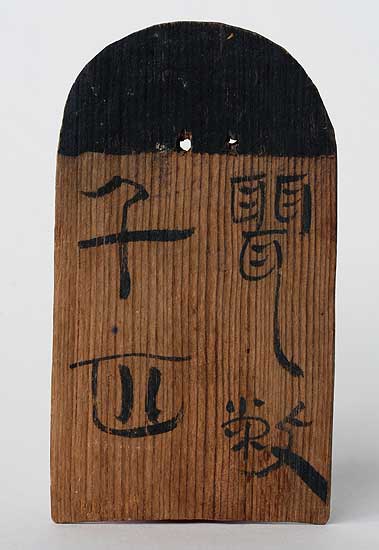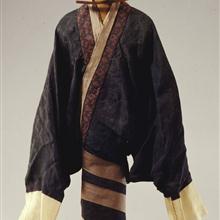Dimensions:Length: 8 cm; width: 4.6cm; thickness: 0.2 cm
Origin: Unearthed from Tomb No.3 at Mamangdui, Changsha, in 1973
Altogether 101 wood plates were unearthed from the Han tombs at Manwangdui. This wooden plate with the Chinese characters “聂敝(币)千匹” was excavated from tomb No.3 in 1973.
The plate is shaped semi-circular at the top and square at the bottom. The semi-circular upper part is blackened with ink and bored with two small holes for tying strings. The square lower part bears Chinese characters written in black ink to indicate the content of the bamboo case to which the tablet is attached.
The so-called “nie bi” is actually a kind of symbolic funerary money used for after-life. The nie bi indicates that in the real life of the early Western Han Dynasty much silk and other fabric were ever used as actual currency. This discovery is a great breakthrough in the Chinese history of Numismatics. The funerary money called nie bi is made of various types of fabric, with fairly beautiful patterns. It seems that the nobles of the Han Dynasty wanted not only money to spend in their after-life but also beautiful money.





